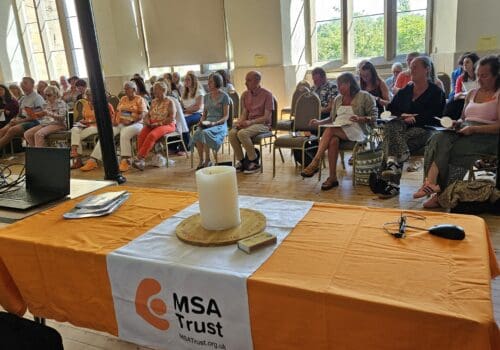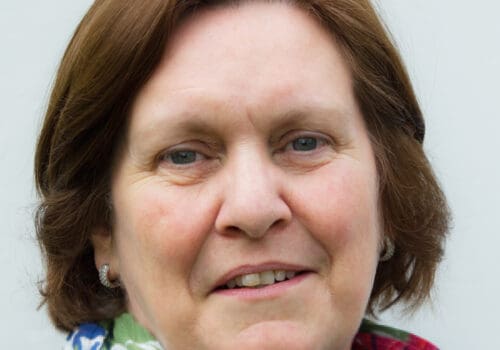2020 Research Grant Blog Series – Part 3
Tampered genetic code
The Lead Researcher is Dr Christos Proukakis of UCL who works at the Queen Square Institute of Neurology where the Brain Bank is housed. Dr Proukakis has worked for many years on somatic mutations in Parkinson’s and other neurological diseases which puts him in a very good position to explore it further in MSA.
Every cell in the body of an individual ultimately comes from the single cell produced at conception. So they all contain identical copies of the ‘original’ DNA don’t they? Well, no. Sometimes a genetic mutation occurs in an individual cell, or in a group of individual cells during a person’s lifetime. This is often the case in cancer. The mutation can then cause the cells to misbehave. It as if a hacker has got in and tampered with the instructions that the cells use to carry out their function. Such mutations are called ‘somatic’.
There is now a lot of evidence that somatic mutations can occur in brain cells. The problem is that if a mutation is confined to the brain, it is not detectable in parts of the body outside the brain. This is why the research will involve looking in detail at post-mortem samples held in the Brain Bank to explore different parts of healthy and MSA-affected brain. This is the third project which highlights the importance of donations to the Brain Bank.
Copy number variation
In earlier work it has been discovered that indeed a few cells in MSA-affected brain do have a particular somatic mutation which leads to extra copies of a gene for the protein alpha-synuclein. This is significant because of a parallel situation in Parkinson’s; in an inherited form more alpha-synuclein than normal is produced and this in turn tips certain brain cells into being susceptible to Parkinson’s. MSA is similar to Parkinson’s in that misbehaving alpha-synuclein is implicated although in different cell types.
The project is aimed at firming up the hypothesis that this so-called copy number variation mutation, when it is present in MSA brain, occurs in the same places where the cells are most affected by the MSA pathology. This would confirm a causal link. In MSA these places are the various regions where oligodendrocytes (the cells that support and nourish the nerve cells) contain inclusions of aggregated alpha-synuclein. The project will focus on four main brain regions and look for differences in relation to the two main MSA types.
The investigations will go beyond broad correlation, looking at:
(a) how the degree of copy number variation affects age of on-set,
(b) how much it occurs not only in oligodendrocytes but also in affected neurons and in the precursors of the oligodendrocytes as well, and
(c) whether an alpha-synuclein inclusion in a cell is always or generally associated with a copy number variation mutation in the same cell – which would indicate a causative relationship.
It is hard to answer in a satisfying way how much closer this project will bring us to a cure. But it is clear that if, as suspected, it allows us to see what precisely is initiating the pathology, it will enable the precise targeting of effective interventions to treat it.
Disclaimer: The views and opinions expressed in the blogs published on these pages are those of the authors and do not necessarily reflect the official policy or position of the MSA Trust.
Recent Posts

MSA Candlelight 2025
19 Jun 2025 | 2 comments

International Nurses Day 2025
12 May 2025 | 1 comment

